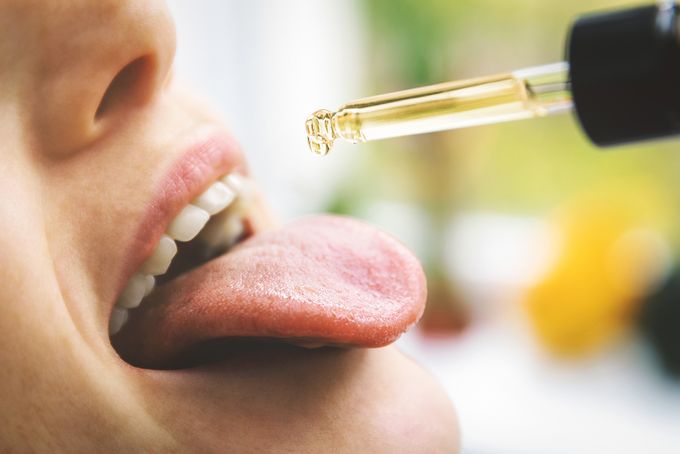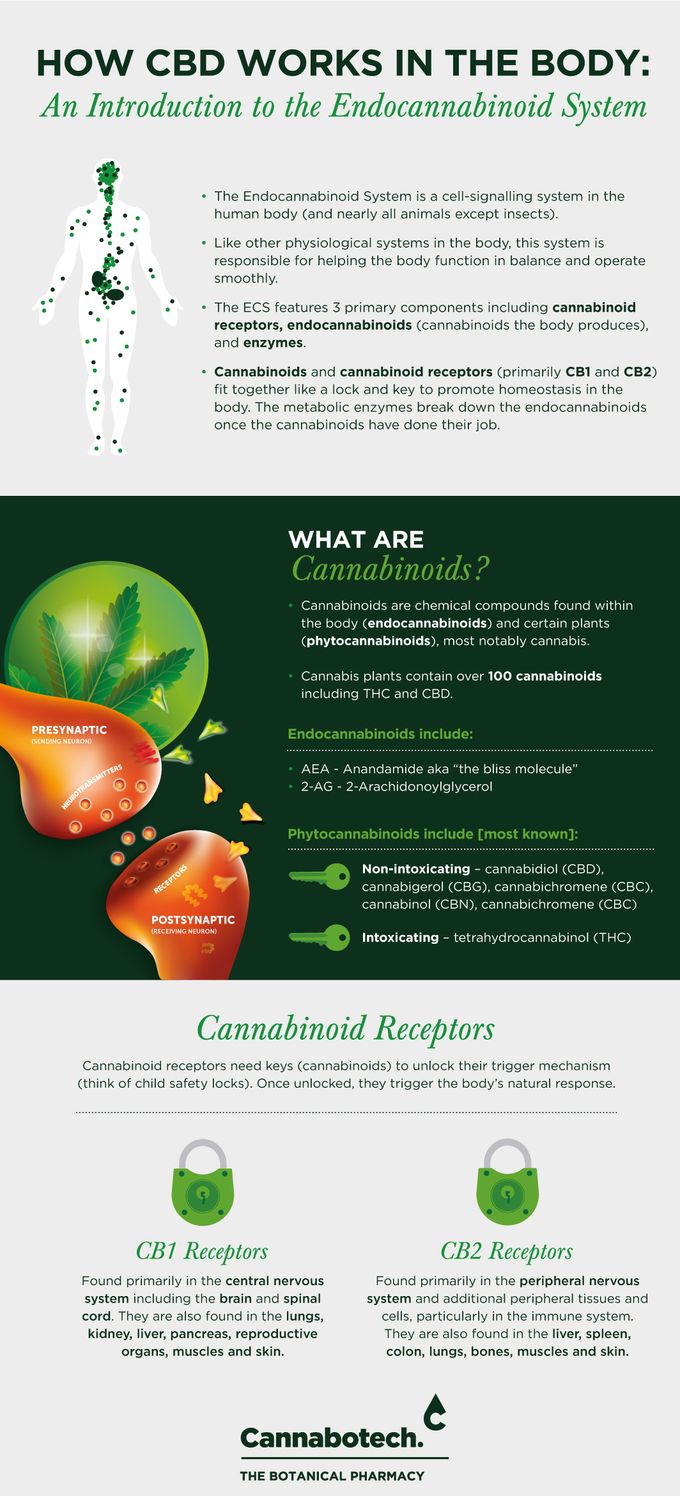The Endocannabinoid System: How Does Cannabidiol (CBD) Work In The Body?
Updated April 14, 2023.

Cannabis, with its fibrous and active compounds, has been part of human history for millennia. Used in a spiritual ceremony, eaten as food, and weaved into paper and linen, the versatility of this fast-growing plant is impressive. Yet, its ability to create a mind-altering high led to a blanket ban. As a consequence, research halted. We still have much to learn but what we do know is impressive and meaningful.
There are an estimated 483 different chemical constituents. Of these, 66 fall into the category of cannabinoids; compounds not found except in the cannabis plant. Tetrahydrocannabinol (THC) and cannabidiol (CBD) are two important cannabinoids that have, in recent times, captured the imagination of scientists, health experts and the public alike.
It’s about time! The scientific journey began decades ago.
Israeli organic chemist and professor, Raphael Mechoulam, uncovered the structure of CBD and THC in 1963 and 1964. In 1980, he and his team published a study in the journal, Pharmacology. They found that CBD had potential as an anti-epileptic drug. The results were staggering, yet the knowledge remained all but hidden; cannabis and its health-giving compounds remained illegal in most countries.
How CBD works in the body?
This begs the question of exactly how CBD works in the body?
For the body to remain in balance (homeostasis), our cells must be able to “talk”. They do this via signalling. Instead of engaging in oral communication, each cell contains biological locks. When a key (a chemical or hormone, for example) meets the right lock, magic happens; a process is unlocked, a signal can be sent. This allows a message to be amplified and passed along. Thus, a response can occur.
In some ways, it is like a computer operating system designed to make you ‘run smoothly’. Each step triggers the next.
Cannabidiol (a “key”) affects the cell’s cannabinoid receptors (the “lock”). In this way, this compound can trigger beneficial responses.
But how can a plant compound change the way the body works?
This is the perfect question and where things really become interesting! To understand, we must look at the endocannabinoid system or ECS.
The endocannabinoid system: What is the ECS and how does it work?
While the term endocannabinoid system sounds complex, it simply refers to the cannabinoid system within us. Yes, the human body is organised to respond to cannabinoids. It also produces them!
The endocannabinoid system regulates the nervous system. Part of its role is to help the body respond to internal and external insults; it is inseparably tied to your physical and psychological responses. It does this via the lock and key mechanism mentioned above.
What makes up the endocannabinoid system?
The endocannabinoid system has four parts including:
- Cannabinoid receptors called CB1 and CB2.
- Cannabinoids produced by the body (endocannabinoids)
- Enzymes that either make or break down cannabinoids.
- Cannabinoid antagonists; chemicals that block these molecules from connecting with their receptors like a basketball player blocking the hoop.
Because the receptors and the body’s own cannabinoids offer possible therapeutic effects, let’s look at these two in more detail.
The lock: cannabinoid receptors (CB1 and CB2)
The receptors of the endocannabinoid system are just like any other: incredibly specific. The key must fit the lock to trigger an action.
Cannabinoid receptor one (CB1) is mostly found in the central nervous system; that is, the brain and the spinal cord. It is involved in appetite, coordination, memory, mood, movement, pain, and other functions.
Cannabinoid receptor two (CB2) is mostly found in the peripheral nervous system; that is, areas other than the brain and the spinal cord, especially in immune cells. Because of this CB2 may influence the immune system, inflammation, and pain.
The key: cannabinoids naturally produced in the body
The incredible human body produces two “keys” that fit the cannabinoid “locks”: anandamide (AEA) and 2-arachidonoylglycerol (2-AG).
Anandamide, dubbed the bliss molecule, acts as a neurotransmitter; a chemical that enables nerve cells to communicate with each other or tissues like glands or muscles.
2-AG, while being identified, remains somewhat of an enigma. This endocannabinoid appears to regulate the nervous system, protect cells in the brain, and play a role in immune function.
Nature’s locksmith: The role of enzymes
The body is designed to maintain equilibrium. Too little of one compound and it will work to raise your level. Too much of another and it will work to aid decline. A finely tuned balance is the aim. Enzymes, then, are biochemical catalysts; they enable chemical reactions to occur at a rate designed to support life.
Imagine a bath. If it’s too hot, you’ll burn as you slide into the water. If it’s too cold, you’ll begin to shiver. We can think of enzymes as taking control of the taps to ensure the temperature is just right.
In terms of cannabinoids, enzymes help to maintain perfect function and balance.
What is the role of plant cannabinoids?
The phytocannabinoids — literally “plant” cannabinoids — include cannabidiol (CBD) and tetrahydrocannabinol (THC). Where the latter alters psychological state, it appears CBD can ease discomfort, enhance mood, and modulate nerve and brain function, without the psychoactive effects of THC.
Whether from inside the body (endogenous) or outside (exogenous sources like cannabis), cannabinoids provide the key that opens the lock in the form of CB1 and CB2 receptors. This initiates physiological change. This means that external cannabinoids can deliver therapeutic benefits. You can support your body through appropriate supplementation.
The Takeaway on the Endocannabinoid System
The endocannabinoid system is complex and important. There is still much to learn but what we already know is astounding. This widespread biological network helps to moderate homeostasis so we can remain well.
And, nature provides a plant-based mimic. CBD is legal and able to connect with the same receptors that endocannabinoids can. It provides the right key to unbolt the cannabinoid lock. The result? Consuming an appropriate natural compound may benefit your health. It doesn’t get much better than that!















